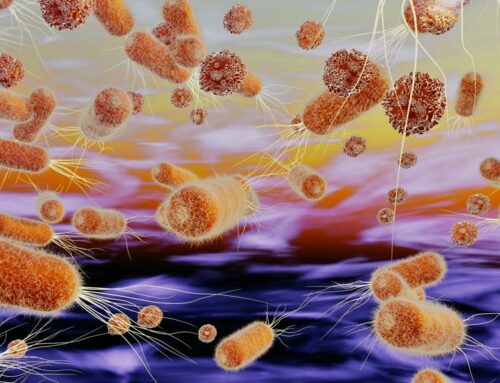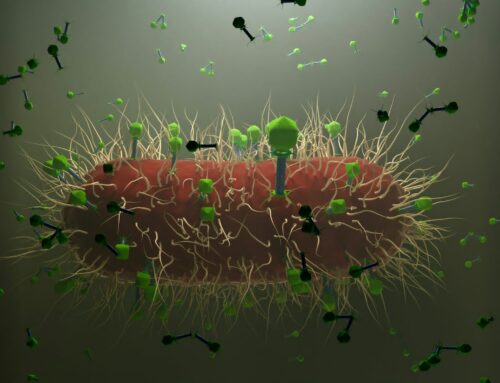Most living things could be associated with one of the primary groups of the biosphere, namely plants, animals and micro-organisms. These entities are necessary for maintaining the great cycles of the ecosystems rolling (Hakalehto 2015). Therefore, the latter could offer immense sources for future healthcare and biobased industries.
Fundamental human needs for livelihood are related to the balance of the microbial world (Hakalehto, 2012). – Microbes are practically omnipresent and mainly invisible to the human senses. Their actions and their consequences are, however, often clearly observable. Therefore, their influences on our body system, industrial and agricultural production, and environment or ecosystems are paramount. Novel industrial concepts could be based on the utilization of microbial communities (Hakalehto, 2022).
Although a minority of the microbial strains are designated pathogens and could harm our populations, most microbes are either commensal or beneficial. The balance of natural ecosystems, in the microbiome and elsewhere, reflects the dynamic relations of the microbes with plants and animals and us, the humans. From a global perspective, these actors are inseparable. This is most evident in the food production industries (Hakalehto, 2020, 2021).
Hence, in the present state of affairs in Mankind, we should remember that these dependences between various functional parts of the ecosystems are, in a broader sense, sources for our just and equal societies. Accordingly, there is a “natural” or “biological reality” outside our urban conglomeration and administrative cabinets. This is true also in the case of each of us and with our alimentary microbiome. They contribute to our nutrient uptake and partake in processing chemical substances and biochemical molecules within our digestion. These are elements of our staying healthy and recovering from various illnesses. Therefore, the microbiological dimension should be taken into accounting also in the hospital setting as an additional source of methods and products of cure.
Any violent human activity that is violent towards the ecosystems and perpetuates the cementing of negligent ideological goals or purposes in our society would severely distort our livelihood and survival. Consequently, the root causes of problems for Mankind seem to be self-inflicted. – The solutions and cures on individual and societal levels could often get found among microbes and their communities and interactions.
The global human interdependence with microbes is based on their vital roles everywhere. For example, we have 1.5 kg of microbial biomass inside our body system, comprising ten times more individual cell entities than our body system. Therefore the “liberties” of microbial strains to constitute communities is an essential ecological function. It could also provide novel ideas and innovations for the healthcare industry. For example, microbes strive for balance in our digestive tract, supporting our health (Hakalehto et al., 2008, 2010, 2012).
Balanced microbial association and molecular communication are vital for our immunity and other physiological functions. Microbes are our footsteps on Earth, too. Their ecosystems reflect our activities wherever human influence extends its reach (Hakalehto, 2015). Therefore, the old phrase “more research is needed” is most applicable and essential concerning our future. More resources should be directed toward microbiological research globally. Their well-being and ill-being both bounce back to us.
by E. Elias Hakalehto, PhD, Adj. Prof. (Universities of Helsinki and Eastern Finland)
Microbiologist, Biotechnologist
CEO, Finnoflag Oy
Vice President (Europe and Africa), International Society of Environmental Indicators
Copyright Elias Hakalehto and Finnoflag Oy
Published on 27th of January, 2023
Edited by Dr. Vladimir Jakovljevic (Microbiome Power)
REFERENCES
Hakalehto, E. (ed.). (2012). Alimentary Microbiome – a PMEU Approach. New York, NY, USA: Nova Science Publishers Inc.
Hakalehto, E. (2015). Bacteriological indications of human activities in the ecosystems. In: Armon, R. & Hänninen, O. (eds.) Environmental indicators. Springer Verlag, Germany.
Hakalehto, E. (2020). Current megatrends in food production related to microbes. 5th International Conference on Food Chemistry and Technology (FCT-2019), Los Angeles, USA, 4.-6.11.2019. Journal of Food Chemistry and Nanotechnology 6 (1): 78-87.
Hakalehto, E. (ed.) (2021). Microbiology of Food Quality. Challenges in Food Production and Distribution During and After the Pandemics. De Gruyter, Berlin, Germany.
Hakalehto, E. (2022). Modern production lines from industrial side streams. Maintworld R&D 23.3.2022.
Hakalehto, E., Hänninen, O. (2012). Gaseous CO2 signal initiate growth of butyric acid producing Clostridium butyricum both in pure culture and in mixed cultures with Lactobacillus brevis. Can J Microbiol, 58: 928-931.
Hakalehto, E., Humppi, T., Paakkanen, H. (2008). Dualistic acidic and neutral glucose fermentation balance in small intestine: Simulation in vitro. Pathophysiology, 15: 211-220.
Hakalehto, E., Hell, M., Bernhofer, C., Heitto, A., Pesola, J., Humppi, T., Paakkanen, H. (2010). Growth and gaseous emissions of pure and mixed small intestinal bacterial cultures: Effects of bile and vancomycin. Pathophysiology, 17: 45-53.





